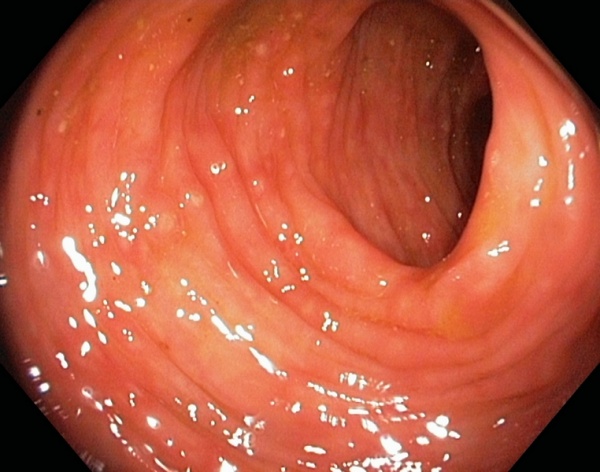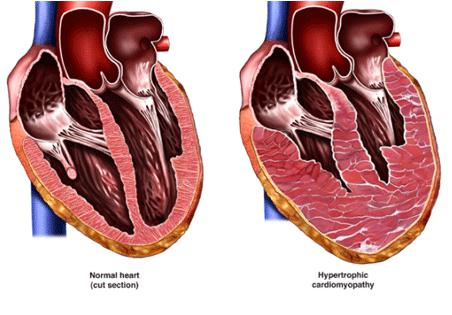Pregnancy with uterine prolapse: is there a chance to get pregnant and carry a baby
you have to hear such a diagnosis as cervical prolapse.
With timely detection of the disease, it does not pose a danger to women's health.
But, unfortunately, this pathology is often diagnosed at the later stages of its development.
This, in turn, complicates the process of treatment and recovery.
Pregnancy with uterine prolapse was previously considered impossible. However, today it is possible to endure and give birth to a healthy child with such a diagnosis!
All that is required for this is to carefully monitor your health, find a good doctor who will manage the pregnancy and at the same time follow all his recommendations.
A prolapsed uterus is an unpleasant disease in which the organ does not occupy the correct position. In this case, there is a violation of the placement of the cervix and the bottom (the permissible limit of the norm at this moment does not correspond to the standard indicators). A pathology of this nature causes a sharp weakening of the pelvic muscles and uterine ligaments in the body.
In a large number of patients, prolapse can be supplemented by a displacement of the level of the vagina itself. At this moment, a woman may feel strong pressure from the inside and a feeling of discomfort during movement and at rest.
It is possible to identify the prolapse of the uterus during a gynecological examination, which every woman must undergo annually. Depending on the degree and severity of the disease, specialists decide on the relative further treatment. It can be both surgical and conservative.
The causes of uterine prolapse can be very diverse. The most common among them is the weakening and loss of elasticity of the muscles that are located in the female pelvis.
Due to the loss of their functional abilities, the muscles gradually lose the ability to hold all the urinary organs in the position necessary for development and functioning.
What is important to know
The descent of the cervix during pregnancy greatly complicates the entire process of bearing a baby. With this diagnosis, childbirth and pregnancy itself are more difficult, which in turn can cause a health threat to the expectant mother.
When the disease is diagnosed at the time of pregnancy, its treatment may be delayed. Such cases are quite rare and are allowed only when a pathology of this nature does not threaten the life of the baby and mother.
In the absence of treatment for prolapse in a woman, it is necessary to lead a calm lifestyle. First of all, you will have to avoid heavy physical exertion and stressful situations.
Due to the fact that the disease is not diagnosed in a timely manner in all cases, there are cases when experts still do not recommend and forbid a woman to become pregnant and bear a baby. These include the following:
- When the uterus descends as a result of hormonal disruptions, it will not be enough for a woman to simply conceive a child. Indeed, in this case, the reproductive function will largely depend on the production of female hormones.
- Pregnancy is not recommended in the case when the possibility of intimacy becomes impossible due to severe complications of the disease or much worse than complete prolapse of the uterus.
- It will be quite difficult to get pregnant even when the uterus is very inflamed, as a result of which a strong tone is concentrated in its muscles, and swelling appears.
In the presence of such complications, the question is not whether a woman can become pregnant and carry a baby, but whether she really needs to do it!
Complications of pregnancy with uterine prolapse
In the event that a woman decides to become pregnant, she needs to be aware of and be informed about all the possible problems and complications that she may encounter during 9 months:
- With the omission of the uterus, the likelihood of miscarriage, fetal fading and early birth increases. Due to the fact that every day it grows and develops, the uterus begins to stretch and increase in the same way. As a result, the elasticity and firmness of her muscles is significantly reduced. In healthy women, the uterus during pregnancy can withstand such loads, but in the case of lowering, this is not always possible for the body. Because of this, quite often women experience premature births or miscarriages in the early stages of gestation.
- Premature abortion and loss of the uterus. When the uterus is lowered and the disease is accompanied by a strong inflammatory process and swelling, the chance of the formation of a pathological abscess increases. In order to save a woman's life, doctors recommend a hysterectomy.
- Violations in the processes of functioning of internal organs and the whole organism. With the growth and increase in the size of the baby, the unpleasant symptoms of the disease become more and more noticeable to the woman. She is often disturbed by aching and pulling pains, urinary incontinence and constipation are rare. With the advent of such symptoms, it begins to develop doubly intensively.
- Wearing special bandages and pessaries. In order to maintain the pregnancy and be able to carry the baby until the required term, specialists may recommend that a woman use a device called a pessary. It is a rubber ring that is placed inside the vagina. Thanks to this, it is possible to maintain the uterus at the desired level and position, which in turn ensures the correct course of pregnancy. The duration of use of such a ring should not exceed 1 month. During this time period, the patient will need to pay special attention to the hygiene of the genital organs (chamomile decoction is excellent for this).
- Hospitalization in a medical institution. For a woman diagnosed with prolapse or prolapse of the uterus, it is mandatory to seek medical help at the final gestation period. Most often, doctors in the last trimester recommend hospitalizing the expectant mother in order to be able to monitor her state of health and, if necessary, conduct an emergency section.
Recommendations during pregnancy with a diagnosis of "Uterine prolapse"
During the course of pregnancy, it is important for a woman with uterine prolapse to think not only about the health of the unborn baby, but also take care of her own well-being.
All that is required for this is to follow certain recommendations, which will greatly simplify and facilitate all 9 months of waiting.
Today, there are enough options for maintaining your own health.
Here, each woman, depending on personal preferences, chooses the one that is more acceptable and simple for her.
These include the following:
- The most effective, simple and affordable remedy for a woman is a supporting bandage. Wearing it during pregnancy allows you to maintain all internal organs in the required position. As a result, the load on the spine and urinary system is significantly reduced.
- Recently, Kegel exercises have become popular. They are aimed at strengthening the muscles of the small pelvis. In the event that a woman’s pregnancy is not her first and she previously resorted to using this technique, but did not achieve the desired result, it will be necessary to consult a doctor without fail. Only a qualified specialist will be able to advise other loads that can be performed during pregnancy.
- When gymnastic exercises and the use of a bandage do not bring the desired effect, then specialists may recommend that the expectant mother use a special device called a pessary. It is installed in the vaginal cavity and maintains the uterus in the desired position. It is important to correctly install the ring so as not to harm the fetus.
With the prolapse of the uterus in the early stages of the disease, you can resort to traditional medicine recipes. In no case should you forget that not all herbs can be used during pregnancy.
If a woman decides to use this particular treatment option, then you first need to consult with your doctor.
Avoidance of heavy physical exertion (lifting weights, tilts, squats). Nervous overstrain and stress will not bring any benefit either.
First degree uterine prolapse
Prolapse of the uterus, like any disease, occurs in various stages and degrees. Moreover, each stage of the disease manifests itself differently.
Pregnancy with uterine prolapse of the 1st degree is characterized by the manifestation of the following symptoms:
- The occurrence of frequent pulling and aching pains.
- Unpleasant pain, which in most cases is localized in the lumbar region and lower abdomen.
- A prolapsed uterus can cause a woman to experience acute pain and discomfort during intercourse.
- Severe dryness of the vagina.
- With improper treatment, the chances of developing infertility and neoplasms increase.
Prolapse of the uterus of the first degree is not a complete contraindication to bearing a child. However, in such a situation, a woman needs to be as careful and attentive to her own state of health as possible.
Throughout the entire period, the expectant mother will have to regularly undergo medical examinations, visit various specialists, wear a support bandage and, if necessary, go to hospital for treatment.
Second degree uterine prolapse
Pregnancy with uterine prolapse of the 2nd degree is more dangerous. At this stage of the course of the disease, the symptoms are more pronounced, which in turn causes a lot of discomfort to the pregnant woman.
So, in the second stage of omission, the following signs appear:
- Frequent constipation and diarrhea.
- Nighttime urinary incontinence, which can also occur during the daytime.
- development of cystitis.
- Pyelonephritis (inflammatory process in the kidneys and organs of the urinary system).
- The development of urolithiasis (in this case, the woman feels a constant urge to urinate, although in fact the bladder remains empty).
- They often begin to disturb, which are concentrated in the sphincter of the anus.
- Tenesmus develops (a false need to empty the bowels).
- Feeling that there is a large foreign object in the vagina.
When lowering the 2nd degree, not all gymnastic exercises can allow you to put the uterus in the right place. It is in such situations that doctors recommend their patients to resort to surgical intervention.
Additionally, therapeutic treatment may be prescribed, which will be aimed at eliminating the inflammatory process and reducing the manifestation of pain syndromes.
Preventive actions

Uterine prolapse is one of the most common diseases.
It is for this reason that it is very important to adhere to all the rules and preventive measures that, if performed regularly, will help to avoid meeting with unpleasant symptoms of the disease.
Particularly attentive should be women whose age has crossed the mark of 40 years and those who have given birth more than once.
Preventive measures to prevent the development of lowering include the following:
- Regular exercise (particularly useful will be exercises that will be aimed at strengthening the muscles of the press).
- During pregnancy, as well as in the postpartum period, a woman will need to pay attention to special exercises that will help keep the ligaments and muscles of the peritoneum in the right tone and tension.
- After the birth of a baby, it is important for a woman to give up hard physical work, sharp bends and movements for a while. No need to carry weights and overstrain throughout the day.
- Every woman is required to undergo a medical examination by a gynecologist every 12 months. An examination by a specialist will help to identify the problem in a timely manner and take certain measures to eliminate it and maintain women's health.
By following simple rules, you can greatly risk developing uterine prolapse and keep your health normal!
Forecasts of the future
The descent of the neck will not pose any danger if the diagnosis of the disease is carried out on time. At the initial stages of the course of the disease, in the absence of a threat to the health of the mother and her unborn baby, no therapeutic, much less surgical treatment is carried out.
In some cases, physical exercises and methods can support health
- Intercostal neuralgia - what is it and how to treat
- How to quickly get rid of dry corns on the legs
- How to treat left ventricular hypertrophy
- Rating of the best drugs for rotavirus for children
- Making tea from currant leaves, the benefits and harms of the drink
- How to drink hydrogen peroxide according to Neumyvakin - an oral regimen
- Features of the treatment of plantar fasciitis with folk remedies
- The composition and beneficial properties of parsley root
- How to get pregnant quickly? Folk remedies
- Herbs-ants in the "pot-bellied" period or the use of herbal medicine during pregnancy
- Why does a sore throat and dry cough occur, and what treatment is required?
- Guy's Room Design: Ideas and Examples
- General rules for drawing up a foundation plan House foundation drawings
- modern art deco bedroom small art deco bedroom
- Pansies: characteristics and photos of flowers
- Making an art deco bedroom: the choice of materials Beige art deco bedroom
- Bedroom interiors in art deco style Bedroom art deco style beige
- Young: planting and care in the open field Young planting and care in the open
- Varieties for open ground
- Pansies: cultivation and care in the open field









